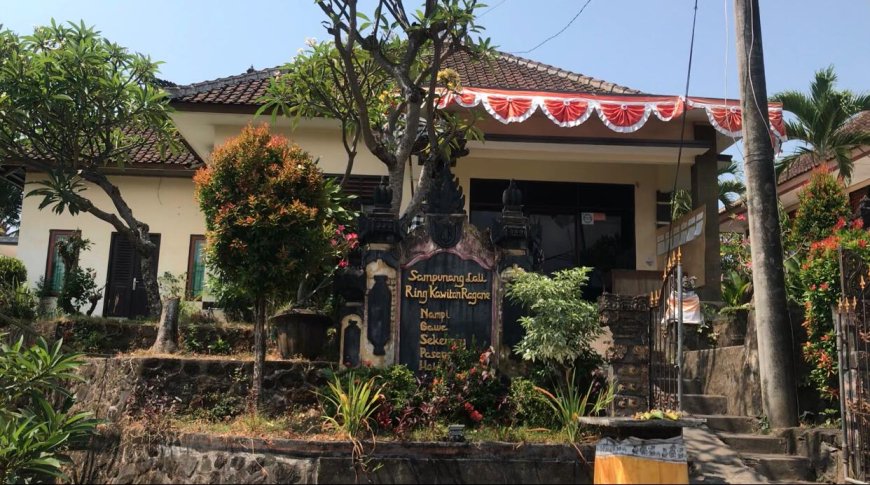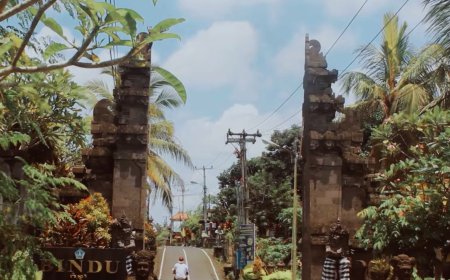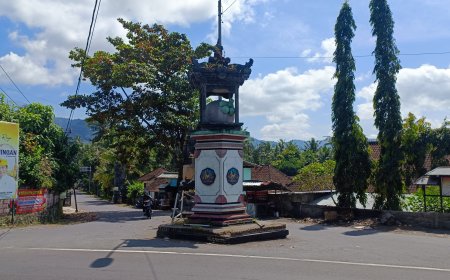Nagasepaha Traditional Village: Unveiling the Exoticism of Tradition, Local Wisdom, and Unparalleled Cultural Riches
Nagasepaha Traditional Village, nestled in the green hills of Bali, is a haven for those seeking refuge from modern life, boasting captivating landscapes and preserving rich traditions. The village's extensive history is rooted in Balinese beliefs, highlighted by Pura Dukuh, accompanying the village's inception. Two prominent temples, Pura Desa and Pura Dalem, showcase the beauty of Bali's cultural heritage, serving as spiritual centers for worship and social activities. Pura Desa honors Dewa Brahma and Ida Bhatara Manik Galih, believed to bring fertility and post-harvest success, while Pura Dalem exudes tranquility in religious ceremonies, attracting visitors seeking spiritual healing. Nagasepaha Village proudly upholds centuries-old Balinese traditions, integrating rituals, dances, and music into daily life, making it a mesmerizing destination for exploring Bali's cultural wealth.

Bali, the island of gods renowned for its natural beauty, also harbors various traditional villages that preserve ancestral traditions and culture. One such village is Nagasepaha Traditional Village. Nestled amidst the lush green hills of Bali, Nagasepaha provides a perfect backdrop for those seeking refuge from the hustle and bustle of modern life. The terraced rice fields in this mountainous village hold the wealth of captivating traditions, local wisdom, and culture, making it an unparalleled tourist destination.
Nagasepaha Traditional Village boasts a rich history rooted in the beliefs and culture of Bali. The village's inception is marked by the presence of Pura Dukuh, which has accompanied the passage of time, serving as a guardian of local wisdom. This temple symbolizes continuity and purity, radiating spirituality with every step taken by the people of Nagasepaha. In the past, the Nagasepaha area was an integral part of Prabakula Village, now known as Padangbulia Village, covering a vast area, including Pegadungan, Nagasepaha, Gitgit, Ambengan, Silangjana, and even Lemukih. During that period, Nagasepaha was referred to as Banjar Kelodan.
When Prabakula Traditional Village held a grand ceremony at Pura Balai Agung, each Banjar had the duty of contributing pesu-pesuan. Unfortunately, Banjar Kelodan, the Nagasepaha area at the time, received jackfruit as their contribution, which could not be used during the ceremony. As a result, 27 families from Banjar Kelodan were expelled from Prabakula Village. Subsequently, they established Pura Nagasepaha as a symbol of separation, and to this day, Nagasepaha Village remains as an independent entity with its distinct cultural richness and unique beliefs.
Pura Dalem of Nagasepaha Traditional Village (Source: Personal Collection)
Nagasepaha Traditional Village proudly showcases Bali's cultural heritage through its temples, including Pura Desa and Pura Dalem. Pura Desa, with its stunning architecture, serves as the spiritual and social center of the village. It is a place for worship and offering to Dewa Brahma and Ida Bhatara Manik Galih, believed to bring fertility and post-harvest success.
On the other hand, Pura Dalem exudes grandeur and tranquility during religious ceremonies and traditional rituals. It is primarily dedicated to the worship of Dewi Durga. Within the beautiful architecture of Pura Dalem, the people of Nagasepaha offer their reverence to Dewi Durga, creating a captivating sacred atmosphere. Pura Dalem serves as a spiritual hub that complements the diversity of beliefs and religious practices in Nagasepaha Village, establishing a close bond between humans and gods in the context of Bali's profound beauty and cultural wealth. Many visitors from outside Nagasepaha come to seek healing for their non-medical issues, known as 'Nunas Tamba,' emphasizing the spiritual significance of these temples.
Nagasepaha Traditional Village steadfastly upholds centuries-old Balinese traditions. Traditional ceremonies, dances, and music are integral parts of daily life in the village, including meaningful ceremonies like Ngaben (cremation) and the village's Odalan ceremony. These traditions reflect the rich and deep cultural continuity, making Nagasepaha Village a fascinating place for those exploring Bali's cultural heritage.
Mecaru (Source: Personal Collection)
The community in Nagasepaha Village maintains strong cultural tolerance, evident in the communal efforts during religious and traditional ceremonies. The people of Nagasepaha not only preserve ancient traditions but also revive traditional Balinese handicrafts. One notable example is the Wayang Kaca painting, a traditional craft that local artisans passionately create and has gained recognition worldwide, providing direct support to the local economy. Additionally, in Nagasepaha Village, there are artisans skilled in saab mote, silver and gold crafting, wood carving, and sand temblela carving.
Nagasepaha Traditional Village is a tangible example of Bali's cultural continuity and richness. A visit to this village is not just a glimpse into the past but also an understanding of the evolving cultural strength amidst globalization. The opportunity to interact with the local residents, learn about their traditions, and experience their warm hospitality makes the Nagasepaha Traditional Village a truly extraordinary destination.





























































